October 25, 2013
Air Date: October 25, 2013
FULL SHOW
SEGMENTS

The Lessons of Superstorm Sandy
View the page for this story
It’s been a year since Hurricane Sandy brought devastating floods to the east coast and destroyed many homes and businesses. Urban Planning Professor Elliott Sclar joins host Steve Curwood to discuss what lessons were learned from Hurricane Sandy about how to protect our coasts and cities in a warming world. (07:25)

Congress Takes Little-Noticed Climate Action
View the page for this story
ProPublica reporter Theo Meyer recently discovered something remarkable. Last year Congress passed a transportation bill with a clause that directed FEMA to take climate change into account for flood insurance. But Meyer tells host Steve Curwood that so far FEMA hasn’t made much progress. (07:45)

Climate and the Bottom Line
View the page for this story
The Securities and Exchange Commission requires that publicly traded companies file annual reports that disclose potential risks to the company’s bottom line. Yet more than 70% of businesses fail to mention the possible effects of climate change. Lawrence Taylor, a citizen researcher who compiled the data, lays out the details to host Steve Curwood. (06:40)
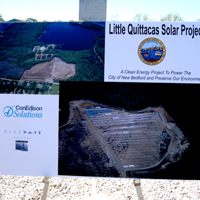
Powershift - New Bedford Goes Solar
/ Naomi ArenbergView the page for this story
Partnerships between the public and private sectors are turning a brownfield into a solar field and making one city a model for renewable energy development. Living on Earth's Naomi Arenberg returns to New Bedford, Massachusetts, where she reported last year on the start of green initiatives, and now charts the city's increasing success with solar power. (09:15)

BirdNote® Acorn Woodpecker
/ Michael SteinView the page for this story
True to their name, Acorn Woodpeckers collect hundreds of acorns over the course of a year and hide them away in holes in trees. Michael Stein reports for BirdNote. (02:00)

Science Note: Palm Oil
/ Poncie RutschView the page for this story
A group of geneticists have found a gene responsible for palm oil yield, which could help make palm oil farming much more efficient in the tropics. Poncie Rutsch reports. (01:30)
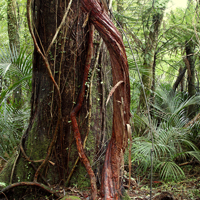
Vines on the March in Tropical Forests
View the page for this story
Carbon dioxide acts as a fertilizer for most plants and new research shows that woody vines, or lianas, are thrive particularly well in a more carbon rich environment. Oliver Phillips, geography professor from the University of Leeds, UK tells host Steve Curwood that’s not good news for tropical trees. (07:25)

Wild Exeter
/ Ari DanielView the page for this story
Even in the heart of a bustling city, wildlife can find a home and help urban folks to appreciate nature, as Ari Daniel reports from Exeter in the UK. (05:30)
Show Credits and Funders
Show Transcript
Host: Steve Curwood
Guests: Elliott Sclar, Theo Meyer, Lawrence Taylor, Oliver Phillips
Reporters: Poncie Rutsch, Naomi Arenberg, Michael Stein, Ari Daniel
[THEME]
CURWOOD: From Public Radio International, this is Living on Earth.
[THEME]
CURWOOD: I'm Steve Curwood. A year after Superstorm Sandy left a trail of destruction along the East Coast, communities are shoring up their beaches and rebuilding.
SCLAR: What we really should be talking about and we're not talking about is how we begin to build our cities so that they respect the way in which the climate is changing coastlines, the way in which storms are happening, and so on, and that's really not happening.
CURWOOD: How we should be planning for the future. Also, how more CO2 in the atmosphere is changing the composition of rainforests.
And finding ways to connect urban folks with the natural world - by building wildlife trails in the heart of the busy city.
MARTIN: The only habitat that’s expanding in the world is the urban habitat. I talk about naturalists being the most endangered species that there is, because people are not growing up curious about their world.
CURWOOD: We'll have that and more this week on Living on Earth. Stick around!
[NEWSBREAK MUSIC: Boards Of Canada “Zoetrope” from “In A Beautiful Place Out In The Country” (Warp Records 2000)]
ANNOUNCER: Funding for Living on Earth comes from Stonyfield Farm., makers of organic yogurt, smoothies and more.
The Lessons of Superstorm Sandy
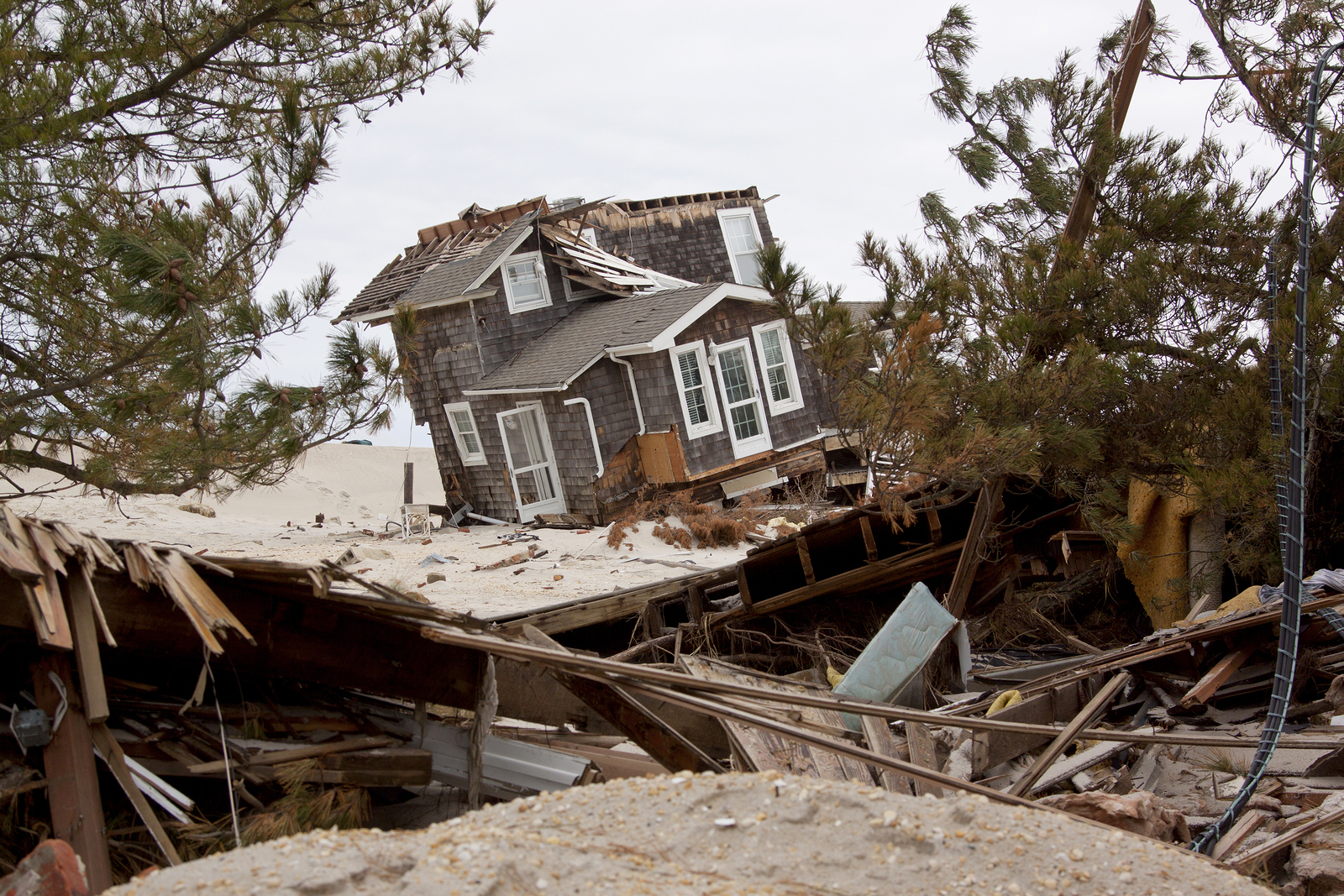
Hurricane Sandy ripped houses from their foundations along the shore in New Jersey (photo: bigstockphoto.com)
CURWOOD: From the Jennifer and Ted Stanley Studios in Boston, this is Living on Earth. I’m Steve Curwood. Just a year ago Superstorm Sandy mowed a path of destruction from the Caribbean to Canada. The storm center smashed ashore in New Jersey, and devastated a huge swathe of the US East Coast.
NEWS REPORTS:
ZEE: It is chaos along the Jersey Shore...the superstorm battering the barrier islands. In the cross hairs - Atlantic City - the road into the seafront town is completely submerged...
BLOOMBERG: Conditions outside are dangerous and they're only going to get worse in the hours ahead. Stay indoors and certainly away from the parks the beaches, the boardwalks, piers and seawalls.
CBS NEWS: Superstorm Sandy - The massive storm is blamed for at least sixteen deaths in the United States and Canada; at least 7.3 million utility customers have lost power in 16 states, and Washington D.C. It is estimated that Sandy has caused 10 to 20 billion dollars in damage, making it one of the most expensive storms in American history.
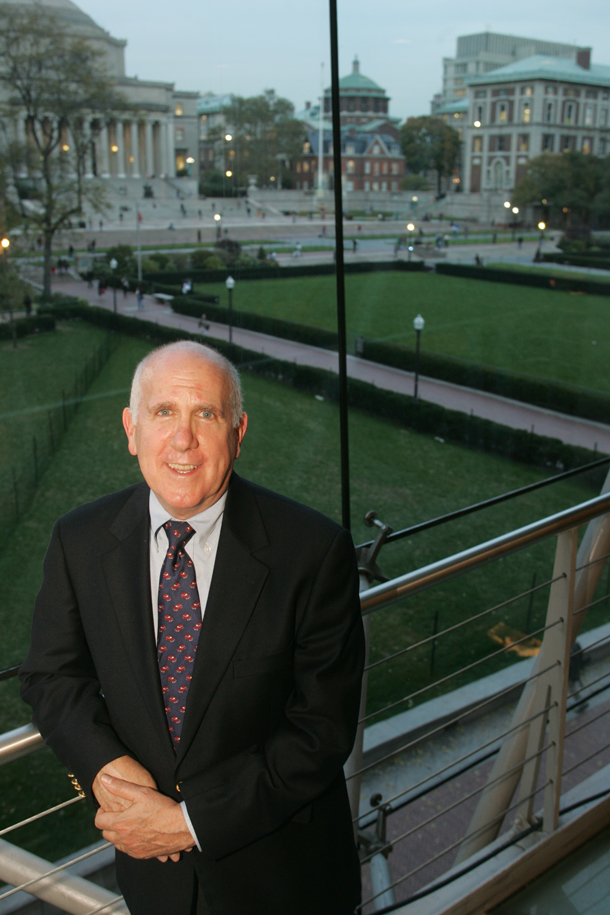
Elliott Sclar (photo: Earth Institute, Columbia University)
CURWOOD: At the final tally, Sandy dealt an estimated $68 billion dollar blow to the economy, and killed more than 280 people in all. During Sandy, Urban Planning Professor Elliott Sclar of Columbia University told us the monster storm was hitting both rich and poor, making truly comprehensive planning for recovery necessary. So we called him up again to find out how the recovery's going. Welcome back to Living on Earth, Professor.
SCLAR: Thank you. It's nice to be back.
CURWOOD: So tell me, where do we stand? It's been – what? -- a year since Hurricane Sandy? How are people who lost homes or property doing?
SCLAR: Well, most of them I don't think are doing very well. I think that part of what’s happened is the insurance settlements are proving to be slower in coming. The insurance companies are fighting. There’s debates about whether it was flooding or whether it was wind damage because there...some of the insurance covers wind damage but it doesn't cover flooding, and so we're having Talmudic debates over what are the causes of damages, which is leaving a lot of people hurt. But as bad as that is to me, one of the larger issues is the social equity issue in this, because a lot of people who were very very badly hit had no legal standing to collect anything. I'm talking about a large number of New Yorkers who are undocumented and renters and lost their housing in low-lying areas such as in places like Staten Island and are living in motels further inland. A lot of those people are doing very badly.
CURWOOD: So looking at the challenges that folks are facing, what do you see as the most acute?
SCLAR: Well I think there's two ways that one can look at this. One can look at the personal stories, the small businesses, the restaurants, the homeowners, the people that have problems, or one can look at the macro of this and saying, “What are we doing as a society to minimize future damage of storms such as Sandy?”
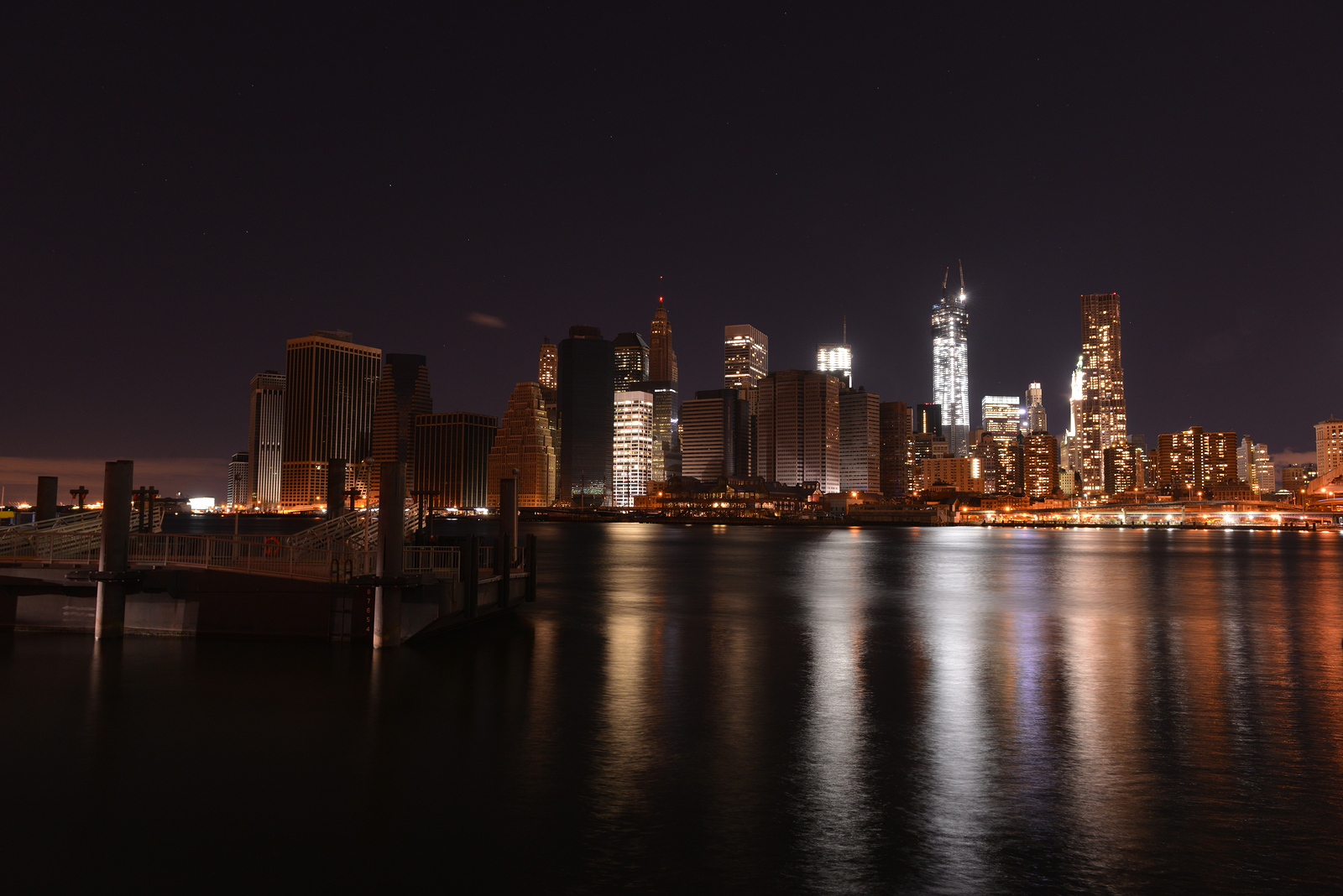
Superstorm Sandy knocked out electricity in lower Manhattan, prompting calls for distributed power. (photo: bigstockphoto.com)
CURWOOD: Well, let's consider first, then, this question of rebuilding in flood zones. A year ago you were saying that some people would just have to think different about where they live.
SCLAR: Yes. I think the problem is that it’s a human tendency to, once the danger passes, we all really want to go back to living our lives just the way we were living them before the problem came. What people are doing is buying back-up generators and that's a perfect example of something that makes perfect sense at the individual level, but is irrational as a social response.
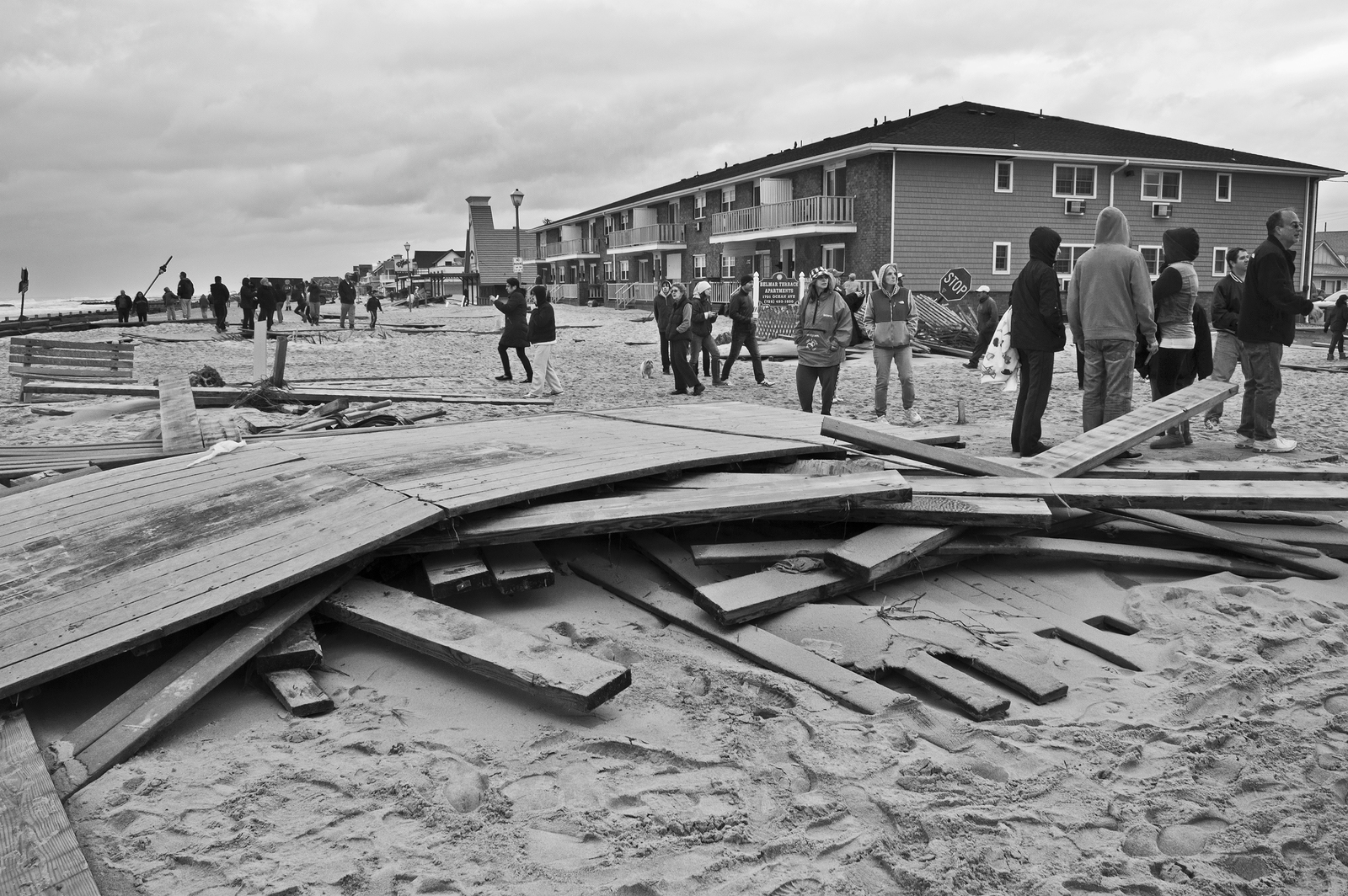
A New York sign before the storm (photo: bigstockphoto.com)
People who can afford to spending $5,000 to $20,000 to put these back-up systems in place -- imagine if we used all that money collectively and we buried our lines so that they would be protected better, we invested in more distributed energy and we invested in wind power and people put up more solar energy and things of that sort. All that money would go a lot further, but the mechanisms don't exist, so people are seeking individual solutions to what's really a massive social problem.
The other thing that’s going on is the notion of building along the water's edge is still a very powerful one, but what we really should be talking about and we’re not talking about, is how we begin to build our cities so that they respect the way in which the climate is changing coastlines, the way in which storms are happening, and so on, and that's really not happening.

The boardwalk destroyed in New Jersey (photo: bigstockphoto.com)
CURWOOD: What steps are the various levels of governments taking to encourage living in safer, smarter areas?
SCLAR: From what I've seen of the New York City, Mayor Bloomberg’s plan, it’s really more of a plan to harden development along the coastline, and less a plan for moving things inland. One of the problems with moving things inland is everyone's reluctant to write off real estate that they have along coastlines, so not that much is happening on that front right now.
There is talk that the state of New York and the city of New York are talking about buying up the properties at pre-storm value of people that live in those places. If that works out that will be very good, and if you turn those places into parks, when the weather’s fine we can all enjoy them, and when the weather’s bad there won't be any damage from them.
What we should be doing is thinking about in a long-term way about how to deal with this regionally. We’re not doing it regionally either. Mayor Bloomberg, he does think big, but he thinks big about what he’s in charge of, which is just New York City, but it's not a New York City issue; it's a regional issue, it's a national issue. Everybody is thinking about very small local solutions. Individual homeowners are buying generators, towns are talking about their piece of the waterfront. New York City is thinking about everything from hardening up property to $40 billion seagates to protect against storm surges, but is anybody thinking in a larger regional systematic way about it? And the answer is no.
CURWOOD: If we did all the work to adapt to climate change, Professor, what do you think a truly resilient city would look like?
SCLAR: I think a truly resilient city, one, it would be one that took its floodplains and low-lying areas into account, made those open spaces; two, it would have a lot of redundancy in its infrastructure, in its transportation systems, in its power systems, in its water and its sewer system. Those would be cities that would be able to withstand the kinds of forces that would be be coming. When the sea level rises, we know where the water is going to go. We should be moving our development away from that.
CURWOOD: Professor, what’s a sign of hope that you see in the wake of Sandy?
SCLAR: Me, the best sign of hope that I see...I see almost every day -- it's really in the younger generation. I mean, they seem to get it a lot better than the older generation. I know we at Columbia University now, we now have a major in sustainable development. It’s the fastest-growing major at the university right now! Younger people don't even want to own cars anymore. Automobile ownership is falling off. Miles driven is falling off. There's a whole younger generation that gets it in ways that my generation doesn't. To me, if you want to know what the hopeful sign is, hopefully as these people began to take power in the world, some of these things will change.
CURWOOD: Elliott Sclar is a Professor of Urban Planning at the Earth Institute at Columbia University. Thanks so much for joining us, Elliott.
SCLAR: My pleasure.
Related links:
- The Earth Institute
- Elliott Sclar’s website
Congress Takes Little-Noticed Climate Action
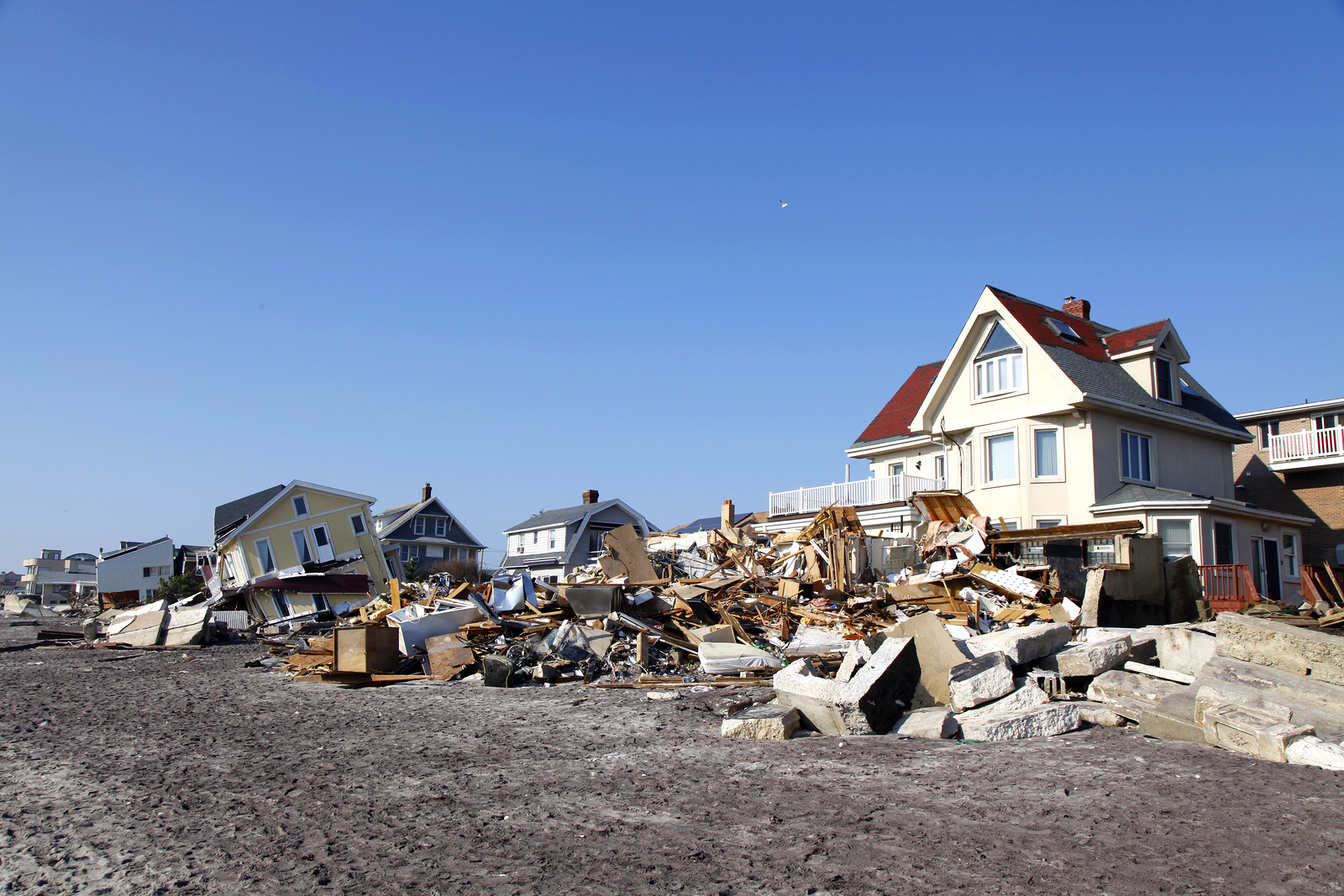
Sandy caused destruction all along the NY/NJ shore (photo: bigstockphoto.com)
CURWOOD: Superstorm Sandy got a boost from unusually warm waters in the West Atlantic, warmth that is expected to increase in years ahead as the climate changes. And though the US Congress has yet to directly enact mandatory limits on global warming gases, Theo Meyer recently made an interesting discovery. The ProPublica reporter discovered that lawmakers did pass a piece of climate change legislation last year before the storm struck. Tucked in the very back of a huge Transportation bill, Meyer found language directing the federal government to consider climate change when it comes to subsidized flood insurance.
MEYER: So this was a massive 584-page Transportion Funding bill. A subset of this bill was called the Biggert-Waters Flood Insurance Reform Act, and there are a few lines in this subset of the bill that actually deal with climate change. It's one of the few places in which climate change and rising sea levels are explicitly mentioned in any federal legislation passed in the last two decades.

Boats washed ashore during Sandy (photo: bigstockphoto.com)
CURWOOD: And what exactly does it say about climate change and rising sea levels?
MEYER: So it requires the Federal Emergency Management Agency or FEMA to use the best available climate science when updating its flood insurance maps and at least figure out a way to take rising sea levels into account in those maps.
CURWOOD: Now before you wrote your story, how well known was this?
MEYER: It was actually not very well known at all. I struggled to find people who were even familiar with this section of the bill.
CURWOOD: To what extent do you think the members of Congress and the Senators knew about this when they voted on the transportation bill?
MEYER: Well I know the entire section of the bill that dealt with flood insurance was not discussed on the floor of Congress, and in fact received very little debate. One of the two authors of the bill - it’s the Biggert-Waters law - one of those two members, Judy Biggert, is out of Congress now and the other member, Maxine Waters, she's actually come out against some portions of this spill after it became apparent how it would raise flood insurance rates for some people in risky areas around the country. The provision of the bill raising flood insurance rates for some homeowners went into effect this month.
CURWOOD: Who do you think put this measure into the bill?
MEYER: I'm not exactly sure who wrote the few lines that deal with climate change. What I can tell you is that the flood insurance program is kind of on the front lines of climate change for the federal government. It's difficult to think of the federal government program that could be affected by climate change much more than the flood insurance program. It insures 5.6 million American households, many of which are located in coastal areas and are vulnerable to flooding, hence the need for flood insurance.
CURWOOD: So FEMA has been directed by law now to take climate change into account with the flood insurance program. So how's the agency doing?
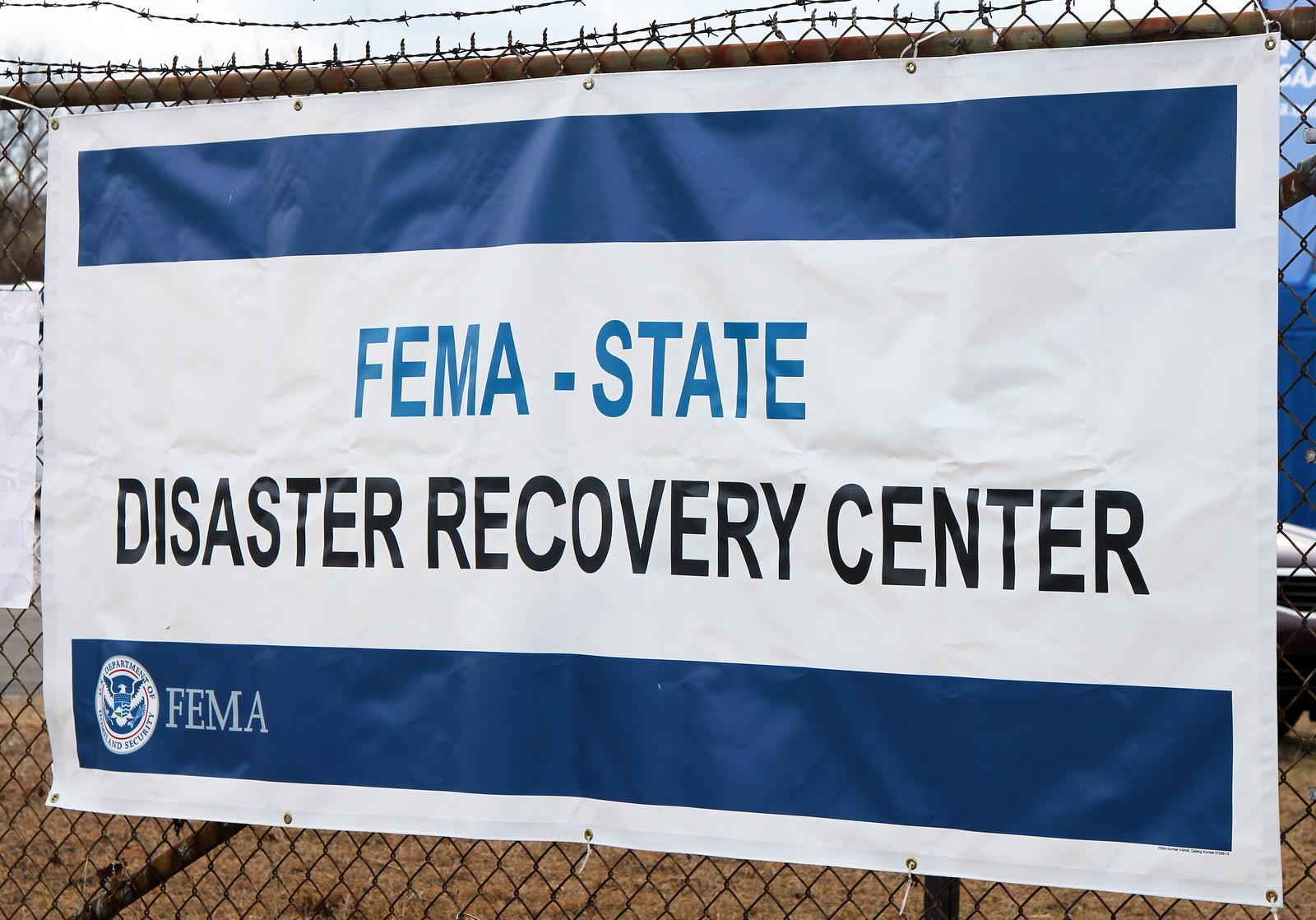
FEMA’s flood insurance program is one of the government programs most directly impacted by climate change and sea level rise (photo: bigstockphoto.com)
MEYER: It's not doing so well. The bill required the agency to set up this council called the Technical Mapping Advisory Council. They didn’t set hard deadlines for doing this, but it said within a year of when the law was passed. This council would have to produce a report with some initial recommendations on how conditions were changing, and how FEMA could make preparations for the future. It hasn’t produced that report, and did not produce that report by the deadline in July because the council in fact has no members.
I talked to FEMA a bit ago before the government shutdown started, and they told me they were in the process of finalizing letters to be drafted to recruit people to sit on this council with the hope that it would meet some time in the fall. I reached back to FEMA for more comment when we ran this story, but it was during the government shutdown and some of the members of the agency who would be required to answer it were furloughed at the time.
CURWOOD: Now, Theo, as I understand it, this summer FEMA did release a report that documents the impact of sea level rise. What exactly did that report say?

Sandy caused destruction all along the NY/NJ shore (photo: bigstockphoto.com)
MEYER: They did. It was a report done by a private contractor for FEMA that had been in the works for several years, I believe, and it was about the impact of rising sea levels, the potential impact on the flood insurance program. The report found as other reports had found previously, estimated that sea levels could rise four feet by 2100, but the new finding was that the portion of the country at high risk of flooding in what are called special flood hazard areas - those are places where homeowners are required by law to buy flood insurance if they have a federally backed mortgage - the report found that those areas would increase by 45 percent by the century’s end, and that the number of Americans who live in those areas could double, with most of that increase due to those rising sea levels and to climate change.
CURWOOD: So this is huge! If we’re going to have almost a 50 percent increase in this area, perhaps the doubling of the people there, this would really bulk up this program.
MEYER: Yes, and this is a program that is already not doing so well. It has been flagged by the Government Accountability Agency as one of the federal programs that is in trouble. It fell deeply into debt after Hurricane Katrina in 2005, and deeper still after Hurricane Sandy. It's currently about $25 billion in debt, and it doesn't really have a way to pay that money back.
CURWOOD: Now, why do you think FEMA has been so slow to act, given that they acknowledge the seriousness of the problem?
MEYER: Well it's a little unclear to me, but FEMA has certainly had its other struggles to deal with this year. When this reform bill was passed, Hurricane Sandy hadn't yet hit, which is obviously taking up a great deal of FEMA’s energy, and there have been very vocal protests against these proposed flood insurance hikes that have now gone into effect, so I think FEMA has spend a lot of time dealing with those as well.
CURWOOD: One of the issues about flood insurance has been that the government subsidizes risky development - redevelopment in places where perhaps people shouldn't be rebuilding. Can you tell us about that?

ProPublica reporter Theodoric Meyer (photo: ProPublica)
MEYER: Yes, there actually are a number of government programs that subsidize development and redevelopment sort of in risky areas along the shoreline. One of those is the National Flood Insurance Program Act, but there are others as well. The government has spent vast sums of money on beach nourishment, matching or paying for most of the cost of pumping sand onto beaches from New England on down to Miami. That can be an incentive to develop along that coastline and to build hotels and vacation homes and what have you there if the people who live there are not paying the whole cost of making sure that those beaches have sand on them.
CURWOOD: To what extent do you think we should be rethinking how we do flood insurance in this country?
MEYER: Well, I think a lot of people would tell you that the reforms that were passed last year were actually a step in the right direction. The number of policies that are subsidized is forecast to slowly slowly slowly go down over the next few years, although it's certainly hard on policyholders who are used to paying $500 or $1,000 dollars a year for flood insurance, and are now seeing their policies jumped to $10,000, $15,000 a year in some cases we’ve we've heard about, although it's unclear exactly how many of those cases there are. So one thing that's been proposed is some sort of government payout that would make flood insurance more affordable for people who truly can’t afford it.
CURWOOD: Theo Meyer is a reporter for ProPublica. Thank you so much for taking the time today, Theo.
MEYER: Thank you for having me.
Related links:
- Read the original ProPublica report here
- Check out ProPublica’s series “After the Flood”
[MUSIC: Kneebody “Greenblatt” from The Line (Concord records 2013)]
CURWOOD: Coming up...transforming an abandoned dump into a home for solar power. Keep listening to Living on Earth.
[CUTAWAY MUSIC: Dizzy Gillespie: “Tin Tin Deo” from Dee Gee Days: The Savoy Sessions (Savoy Records 1985) Happy Birthday Dizzy – 10/21/1917]
Climate and the Bottom Line

The Securities and Exchange Commission. (Securities and Exchange Commission)
CURWOOD: It’s Living on Earth, I’m Steve Curwood. When Superstorm Sandy hit, Wall Street shut down as lower Manhattan was flooded, and billions of dollars of value was lost in the fires and floods related to the storm. But comparatively few businesses tell their investors the risks that climate disruption poses for their enterprises.
In fact, according to Lawrence Taylor, more than 70 percent of the required annual reports of publicly traded companies ignore such climate risks. Taylor is a retired data base developer and now an indefatigable citizen researcher. He combed through all the annual reports listed on the major stock exchanges to see how well they were informing their shareholders of these risks, not just the prospects of physical danger but also the potential financial impacts of climate protection laws in the future.
TAYLOR: The bottom line is there's cost of the laws if they had put additional controls on the things they did, or if it shifted the prices and therefore their product would be more expensive. Separate from the cost of the laws are the possible physical impacts, and think how oil wells in the Gulf of Mexico, if a hurricane comes and clobbers it hard, that’s a physical impact. So there’s two different things, cost of laws, and possible physical impacts that would cost them, them as a company.
CURWOOD: Now tell me what you found overall in your analysis. Of the percentage of U.S. companies that acknowledge climate change and their assessments, what exactly did they say?
TAYLOR: It varied. There’s a little over 3,900 companies and their annual reports that we went through...I went through. And about 762 are looking at the cost of new laws that might take place because if there are climate change laws, a carbon tax or something like that, or what EPA is trying to put into place, then those particular companies would have some costs affected. Think of a utility that might have to put additional pollution controls on. The others, even less, 466 of this 3,900 talked about possible impacts, and they ranged all over from property management companies to you name it, who have recognized that there may be some impact.
CURWOOD: So, Lawrence, let’s talk about these individual sectors of the economy. What about the fossil fuel industry? How often do the oil, gas and coal companies mention climate change?
TAYLOR: First of all, they are about six percent of all the businesses, and 88 percent of that six percent mention climate change, 84 of them mention the cost of laws, but only 22 percent of them mention possible physical impacts, and when you stop to think about it, some of these with offshore oil wells are going to have physical impacts. Some of them are kind of fuzzy, for example, they’ll use a word like - this is paraphrasing it - some scientists think there might be climate change being impacted by carbon, as opposed to 97 percent of the scientists...that kind of fuzziness.
CURWOOD: To what extent do these companies talk about the carbon bubble, that is this notion that regulation will likely choke off the extraction of all the various fossil fuel reserves that are out there at some point or another?
TAYLOR: I didn’t see any reference to that in their comments, nor even the more politicized war on coal or any of those kinds of things. I didn’t see any mentions of that kind of discussion in the annual reports.
CURWOOD: Lawrence, when you went through this, what sectors of our economy did best in making the assessment of climate risks?
TAYLOR: In terms of the physical impacts, agriculture is high, mining is 50 percent, for example, many utillities, about 42 percent of the utilities have that. Insurance, which is a broad category, does very high, and particularly insurance that does property, and casualty insurance. They’re acknowledging climate change is real.
CURWOOD: Why do you suppose climate change is generally ignored by so many companies?
TAYLOR: That’s a good question, and the truth is I can only speculate, and I came up with four reasons: maybe they haven’t even considered climate change, I mean, the economy in the last five, six years has brought a lot of challenges to companies, and they’ve just had a lot of stuff on their plate, maybe they haven’t even been thinking about it.
Another possibility is maybe they accept the reality of climate change, but they don’t think climate change is a financial threat to their business. In other words, to be in an annual report, you’ve really got to be dealing with the economics of the business. They may accept the science, but they don’t think they’re going to be impacted. I’m sure there’s a few that would like to believe the propaganda of climate deniers, they just don’t want to look at the science.
And finally, I think a few might be concerned about possible lawsuits if they admit climate change is real. Some carbon companies have actually been sued and the lawsuits have been thrown out to my knowledge, but they’ve been sued admitting that if climate change is real, and they might be contributing to it, then they might have a responsibility - that was the basis of the lawsuits. But I suspect that some of them are really concerned that if they’re really responsible they might have some financial things so they would rather ignore putting climate change in the report at all.
CURWOOD: How long did it take you to do all this work?
TAYLOR: I’m up to about 2,000 hours. And it’s a continuing project. I’ll continue to do it until I can’t any more and pass it on to somebody else.
CURWOOD: Why do you do this? What’s your motivation?
TAYLOR: Well, I can give you big generalities, but the bottom line is, I got to thinking about my children and my grandchildren, and the kind of world they will be experiencing if you accept what the vast majority of scientists are saying. And I said, “How could I not do this?”
CURWOOD: Lawrence Taylor is a citizen researcher who compiled data of the climate risk disclosure of all the companies listed on major stock exchanges here in the U.S. Thanks so much.
TAYLOR: Thank you.
Related link:
Lawrence Taylor’s Website Decision Facts
[MUSIC: Bill Laswell “Beyond The Zeros” from Dub Chamber 3 (Universal – Songs of Polygram 2000)]
Powershift - New Bedford Goes Solar
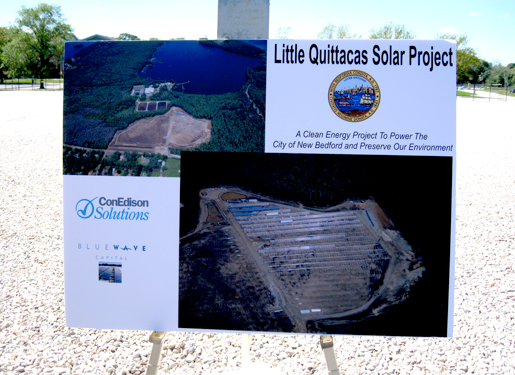
Little Quittacas, is the solar site that will power New Bedford’s water system. (photo: Naomi Arenberg)
CURWOOD: Last fall we visited New Bedford, Massachusetts, once called “the city that lit the world", due to the vast whaling fleet that brought in the oil that lit lamps in the 19th century. The city has seen disinvestment and high unemployment more recently, but officials decided that energy efficiency and renewable power were key to moving forward. On our 2012 visit, Living on Earth’s Naomi Arenberg found that, despite incentive programs, solar residential projects were just getting off the ground.
ARENBERG: So far, only three homeowners have gone solar with this program, but two more installations are pending, and residents are signing up for solar evaluations.
CURWOOD: Well, a year later, public sector solar has really taken off, and the city is making a big contribution to Massachusetts Governor Deval Patrick’s ambitious statewide energy goal - 1,600 megawatts of renewable power by 2020. Naomi recently went back to New Bedford for our update.
[VOICES IN PARKING LOT]
ARENBERG: It’s opening day at New Bedford high school. The parking lot is crowded. Neatly manicured lawns surround the brick building. But between the school and a wooded area to the north, a two-acre parcel was covered with glistening, crushed stone over the summer - an important stage in a toxic waste cleanup.
DEVILLARS: This is a model site for solar development, not just here but anywhere in the country.
ARENBERG: John DeVillars should know. He’s a former EPA administrator. Today he’s among the experts telling high school students and recent graduates about the next stage of the project. 10th graders Chase and Tyler aren’t sure what to expect.
CHASE: I was invited to this event. Apparently it’s about some solar farm that they’re building. I didn’t know about it, but I hope to learn more about it. I think it’s very interesting.
TYLER: Actually, all of us are engineering students and we were all invited the same way. We’re all here because this has an opportunity to make a lot of engineering jobs in the future so it's just like to give us a heads-up.
ARENBERG: That “future” is unfolding right in front of them. Two years ago Massachusetts set up its Clean Energy Results Program specifically to promote energy generation on formerly contaminated land, like this new stone field.
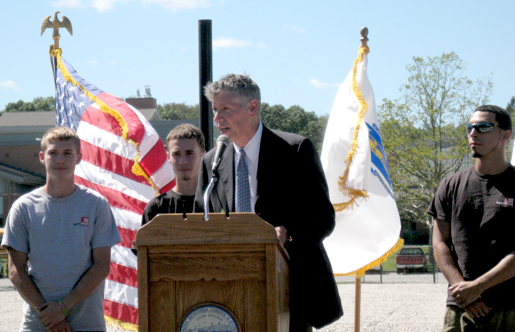
Beaumont Solar’s Phil Cavallo was joined by the Vocational-Technical graduates he hired recently. (photo: Naomi Arenberg)
The high school sits on top of the old Parker Street Dump. From the 1930s through the ’50s everything went in the dump - construction waste, household appliances, garbage, trashed vehicles. Local factories dumped ash, laden with heavy metals and PCBs. Parker Street closed around 1960, and several years later the city repurposed some of the land for a new high school. Back then, former dumps were often developed, until the EPA was established and, in the late 1970s, began regulating PCBs.
But now, after nearly a decade of cleanup work, the high school site is deemed safe, and a public/private partnership, involving John DeVillars, is about to construct a solar array on this capped portion.
DEVILLARS: You’re taking a piece of land that has no higher or better use, that’s environmentally contaminated, is adjacent to a middle school and a high school, and by putting solar energy in here you’re cleaning up the site.
ARENBERG: DeVillars now works in the private sector. His firm, Blue Wave Capital, is the renewable energy developer that’s overseeing this project, as well as others in New Bedford.
DEVILLARS: You’re delivering savings and carbon reductions to the city, and you’re providing a great educational opportunity for the kids, and it’s just this kind of site that we should be developing, not cutting down trees or taking valuable farmland, but coming into our inner cities, finding sites like this that have multiple community benefits beyond just the lower electricity costs, and then making it happen.
ARENBERG: During construction, students from the vocational-technical school will apprentice on-site, learning the skills needed to build a solar farm. Once the farm is up and running, by year’s end, interactive “kiosks” in schools will show the kids how much energy the panels are generating and how that compares with other “green” measures, say, some number of cars taken off the road or trees planted.
Teachers are developing a curriculum based on renewable energy and climate change. The idea is to make science classes relevant and to educate students for “green” jobs. And New Bedford’s solar programs are already paying off - literally - in terms of employment. Three of this year’s voc-tech graduates have landed jobs with Beaumont Solar. That’s the inner-city company installing all of the arrays planned for municipal land. Company President Phil Cavallo credits state policy with his firm’s growth.
CAVALLO: The environment here in Massachusetts is fantastic for creating jobs and for creating opportunity for young individuals that are graduating with electrical engineering degrees and mechanical and civil engineering degrees, as well as voc-tech graduates that want to be electricians, licensed electricians in the state, so it’s a great opportunity for the industry and the community.
ARENBERG: Cavallo’s enthusiasm was underscored by another private sector player. Michael Gibson runs Energy Services at ConEdison Solutions, the firm that’s actually building the Parker Street solar farm. It’s a subsidiary of the giant energy company that serves New York City and some suburbs. ConEd Solutions will own the array, once it’s built, as well as the energy it produces, and then sell the electricity back to the city at a competitive, fixed rate. Gibson is a Florida native, and he compared solar production back home with the Bay State’s output.
GIBSON: The state of Florida, the Sunshine State, with a lot more sun except probably today, only has 117 megawatts, half of what you had last year, a third of what you have now, so I mean it’s a clear indicator that proper incentive is a way to drive, to change, on a state level.
ARENBERG: On the public side of the partnership, it was municipal workers who cleaned up this site. They finished the job ahead of schedule and under budget, at half of the one-million dollars allocated. And Mayor Jon Mitchell put a finer point on the city’s accomplishments.
MITCHELL: One of the things that government officials and the private sector are recognizing more and more is that big problems are solved locally. We here in New Bedford are taking control of our own destiny. We don’t care that New Bedford, when you look at income, when you look at other statistics, might be not a community that has a lot of resources. Doesn’t matter. And we work with our partners, both private and public, at different levels of government, to make sure we can pull all the pieces together. Those efforts, those combined, collaborative efforts are producing something that’s not going on anywhere, certainly in this region, and perhaps not even anywhere in the country.
ARENBERG: Curt Spalding is Regional EPA administrator.
SPALDING: These things happen because people take risks. They lay it on the line. They make it happen.
ARENBERG: Spalding says that there’s no question that the most effective way to address the challenge of climate change is to act locally, at the city level.
SPALDING: Mayors are where it’s at. I wish I could say it was happening in Washington the way we want it to. I think my boss, the President of the United States, would say the same thing I’m saying. It’s not working in Washington, but it is working at the city levels.
ARENBERG: This city has fitted three schools, a public gymnasium, and the Department of Public Infrastructure building with solar panels. By January both the high school project and one that will power the entire water department will be online, a total of 4.3 megawatts in the municipal system. An additional seven-point-one megawatts will be generated by projects awaiting the mayor’s approval. All together that’s enough energy to power just under 2,000 homes. All of this has happened over the last three years, from scratch. New Bedford will soon get 43 percent of its power from the sun - the final goal is 60 percent renewable energy. EPA’s Curt Spalding reminds the students, seated on the folding chairs next to the stone-covered field, that their involvement is key.
SPALDING: My last point is to all you guys sitting to the right and left of me, young men and women. Addressing the problem of climate change will be your lifetime burden. Those of us who are, I dare say, on the backside of our careers, we will move on in the next ten years, but this is the thing you’re gonna have to take on, and you’re seeing a great example of how it can be a passion for you, a job for you, and a way to define your importance in life, your purpose in life.
[APPLAUSE]
ARENBERG: The longer the older generation avoids reining in carbon pollution, the tougher the challenge will be for these teenagers. The advice from that older generation on this sunny afternoon is all about collaboration, public and private. Working together will be the way to reduce energy costs, meet the ambitious goals set by the Massachusetts governor, and perhaps help save the planet, one city at a time.
For Living on Earth, I’m Naomi Arenberg at New Bedford High School.
Related links:
- City of New Bedford website, Parker Street site map
- EPA: Parker Street Waste Site-Community Update
- “Toxic Legacy: Parker Street Clean Up, 5 Years In” The Standard Times of New Bedford
[MUX - BIRD NOTE® THEME]
BirdNote® Acorn Woodpecker

The acorn woodpecker was most likely a model for the cartoon character Woody Woodpecker. ( © Garrett Lau)
CURWOOD: For many animals, this is the time of year to gather plenty of nuts and seeds to stuff into store cupboards ready for winter. For one particular bird of California and the American southwest, that means a diligent search for oak trees, as Michael Stein explains in today's BirdNote®.

An Acorn Woodpecker stashing an acorn. (© Tom Grey)
[WOODPECKER CALLING AND PECKING INTO WOOD]
STEIN: He doesn’t sound exactly like Woody Woodpecker, but this Acorn Woodpecker was probably the model for the cartoon character.
[WOODY WOODPECKER CARTOON]
STEIN: Listen to Woody’s muse, calling from a dead oak tree.

Male Acorn Woodpecker (© Tom Grey)
[ACORN WOODPECKER CALLS]
The story goes that Walter Lantz and his new bride, Grace, were on their honeymoon in a cabin in California. A racket on their roof drew them outside, where they spotted a woodpecker, pounding away at the shingles. And worse, the bird actually bored a hole in the roof, letting in the rain. Now, Lantz was ready to shoot the pesky critter, but his wife suggested that, instead, he vent his frustration in a creative fashion. And in this way, supposedly, Woody Woodpecker was born.
[WOODY WOODPECKER CARTOON]
STEIN: An Acorn Woodpecker might use an old roof in a pinch, but it’s much more likely to excavate holes in oak trees, stuffing the holes with acorns.
[ACORN WOODPECKER CALLS]
STEIN: Dozens of acorns. Hundreds of acorns. The cartoon Woody was an imp, but the Acorn Woodpecker is an industrious bird.
[ACORN WOODPECKER CALLS]
STEIN: A family group will store thousands of acorns over the course of a year.
STEIN: I’m Michael Stein.
[MUSIC: Nine Yards Orchestra “Sleep Waltzing” from Our Backyard (GoodtoGo Music 2001)]
CURWOOD: To see some photos of the Acorn Woodpecker, hop down to our website LOE.org.
Related links:
-
- BirdNote ®
CURWOOD: Coming up. Extra carbon dioxide in the atmosphere helps plants grow, but that may not be good for rainforest trees. That’s just ahead on Living on Earth. Stay tuned.
ANNOUNCER: Funding for Living on Earth comes from the Grantham Foundation for the protection of the environment, supporting strategic communications and collaboration in solving the world’s most pressing environmental problems. The Kendeda Fund, furthering the values that contribute to a healthy planet, and Gilman Ordway for coverage of conservation and environmental change. This is PRI, Public Radio International.
[CUTAWAY MUSIC: Don Byas: “Melody In Swing” from Jazz Foundations Vol. 20 (Cugate Ltd 2008) Happy Birthday Don Byas – 10/21/1912]
Science Note: Palm Oil

The fruit of the oil palm looks like a coconut, with fruit on the outside of the shell and palm oil on the inside of the shell (Photo: Big Stock Photo).
CURWOOD: It's Living on Earth, I'm Steve Curwood. In a minute, finding wild things in a busy city, but first this note on emerging science from Poncie Rutsch.
RUTSCH: Over half of the vegetable oil used worldwide in cooking, cosmetics, and cleaning comes from a tropical oil palm tree, that’s often planted on deforested land. The most popular oil palm species comes in three types, which yield different amounts of oil.
The oil palm kernels can grow a thick shell, and produce a small amount of palm oil. They can grow with no shells, and produce no fruit or oil. Or they can grow thin shells, and produce a lot of palm oil. But there was no way to tell which type a tree was until it grew large enough to bear fruit.
As early as the 1920s, breeders guessed that a single gene controlled both shell growth and oil yield. They called it the Shell gene. Now, a group of geneticists have found the Shell gene.

A woman works in an oil palm nursery in the tropics (Photo: Big Stock Photo).
Rob Martienssen at Cold Spring Harbor Laboratory in New York, worked with the Malaysian Palm Oil Board to complete the oil palm’s genome. They determined that by mapping the genome of the oil palm seed before planting, they could select only the trees with thin-shelled fruit – the ones that will yield the most palm oil.
The new discovery should enable palm oil farmers to produce the same amount of oil using fewer trees and less land.
That’s this week’s note on emerging science. I’m Poncie Rutsch.
Related link:
oil palm tree
Vines on the March in Tropical Forests
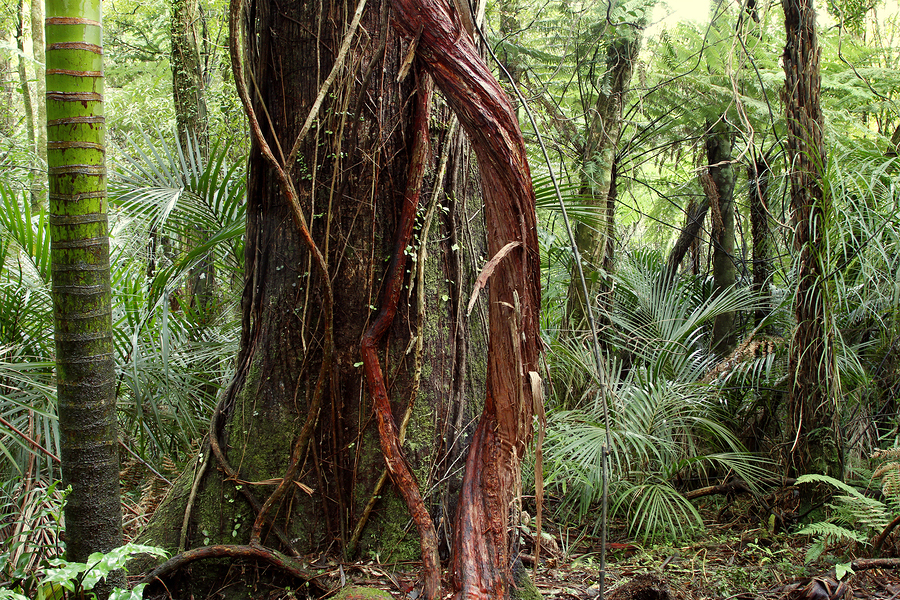
Trees with a large network of branches are more prone to vine infestation. Palm trees, with few branches, can more easily repel them. (bigstockphoto.com)
CURWOOD: Tropical forests are a rich and vibrant habitat. They are home to more than half of all the planet’s species of plants and animals. Yet though life flourishes in the hot humid equatorial regions, competition for space there can be fierce. As levels of carbon dioxide increase, the dynamics of species competition can be upset and thrown out of whack. CO2 acts like a fertilizer for most plants but new research shows that the woody vines, or lianas, that thrive in the tropics are particularly well suited to a more carbon rich environment. And what's good for the lianas is not necessarily good news for slower growing tropical trees. Oliver Phillips, Professor of Geography at the University of Leeds in the UK explains how these vines or lianas are getting the upper hand.
PHILLIPS: They compete with trees directly so they’re hitching a ride to the canopy, if you like, on the back of trees, on the back of the carbon the trees are investing in wood. Lianas do it cheaply, they’re getting up there, and then they’re competing in terms of stopping light getting to the trees, so that slows down the growth of some of the trees. They’re taking water out of the soil, of course, that’s also not great if you’re a tree and roots happen to be near a by, and also do in a more subtle way, change the composition from a tree’s viewpoint.

Vines can be found in most forests but are particularly abundant in the tropics. (US National Park Service)
So if you are a species of tree which has an architecture which is really vulnerable to liana infestation, you’re likely to get those extra lianas in you. If you happen to be, say a palm, which doesn’t have branches and it just goes straight up, and manages to shed, clean its trunk efficiently by dropping down leaves, in a liana rich world, you could actually have an extra advantage because all the trees around you are being smothered by lianas and you can get through because you’ve got special liana resistant techniques. So if you think about how a liana increase is affecting the forest, it’s affecting the carbon storage, but it’s also affecting the kinds of trees which grow.
CURWOOD: So here we are with about 40 percent more carbon dioxide in the atmosphere than we had 150 or so years ago, and that’s like fertilizer I guess in some respects for these vines, but what about about the trees? Don’t they also metabolize all this extra carbon dioxide and grow faster?
PHILLIPS: You’re right, Steve. We think they do. We think there’s a physiological level; in essence almost every plant should be benefitting from this extra CO2 in the air. Now, lianas are, because they’re getting this free ride to the canopy, these are the plants which will take special advantage of those extra resources. That said, we’ve got evidence that trees in the Amazon have been growing faster, for example, in the 1990s than they did in the 1980s. There’s good theory to support that’s probably partly induced by extra CO2 as well.
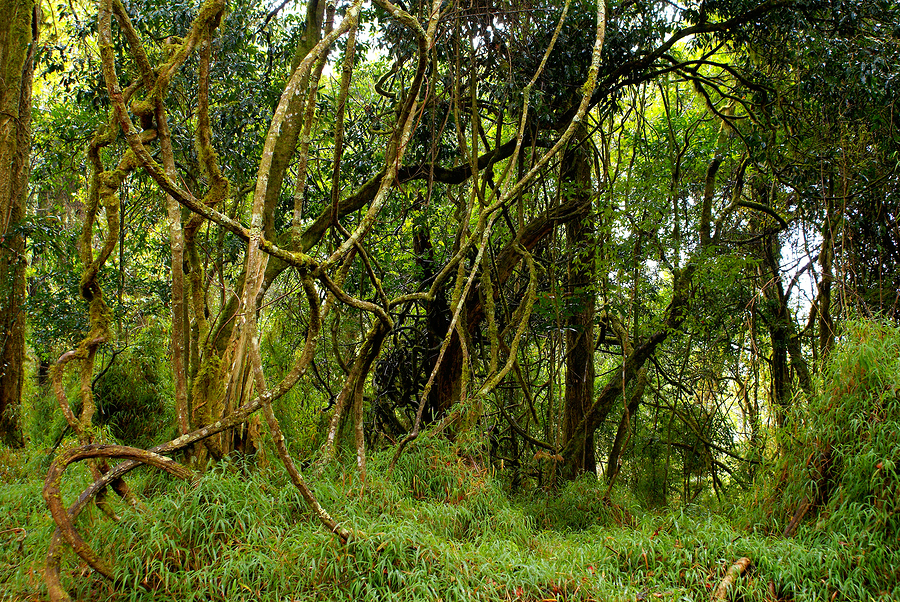
Woody vines, or lianas, are a natural part of tropical forests but they are disproportionately benefiting from a more carbon rich atmosphere. (Bigstockphoto.com)
CURWOOD: So how long do tropical trees live on average, do you think?
PHILLIPS: Well, that’s a good question. A difficult one to answer, but on average, one would say between 50 and 100 years, surprisingly little. There’s probably a few really old guys who get to about 500 years, but most of the system is quite fast.
CURWOOD: Tropical forests are usually a net sink for carbon, that is they soak carbon up out of the atmosphere, but what do you think is the capacity for forests or individual trees to store excess carbon dioxide? What kind of limits might there be?
PHILLIPS: Well, the limits could be set partly by climate itself, so we think CO2 is fertilizing trees, helping them to grow faster, and that in a carbon sense is “a good thing”, taking CO2 out of the atmosphere. But of course that same carbon dioxide which is fertilizing trees is also changing the climate, and in the Amazon the last few years there’s been a series of intense droughts. Those droughts have tended to kill more trees than were dying before.
So what we’re starting to see is a higher level of drought, possibly higher temperatures in the Amazon killing the bigger trees. Now that process then, accelerated mortality, if you like, is starting to counteract the accelerated growth which is driven by the CO2 so the mortality rate could increase beyond the growth rate. And if that were to be the case, then instead of seeing a carbon sink, which is what we’ve been measuring in the Amazon for decades now, in the future we could actually see the system becoming a carbon source.
CURWOOD: Let’s do a little math here in terms of carbon sequestration. So if trees sequester more carbon than vines do, but vines are taking over, what does that mean at the end of the day?
PHILLIPS: The net impact of all that is CO2 is benefiting the whole system in terms of carbon storage, but lianas are knocking that down about 20 percent lower than it would be if they weren’t there, and they’re doing that by surpressing some of the extra growth the trees would be doing, and killing some extra trees.

Lowland tropical forests respond to a warmer climate by migrating up mountainsides to cooler climates. (bigstockphoto.com)
CURWOOD: But what you’re saying is that as the vines spread then perhaps there’s 20 percent less carbon sequestration in the tropical forest.
PHILLIPS: Well, yes, there’s about 20 percent less than there would be if they weren’t there.
CURWOOD: Now another change in tropical forest dynamics is this notion that some species of lowland rainforest trees are beginning to migrate up mountain sides. Can you tell me about that?
PHILLIPS: Yes. There’s been a couple of studies now. One in the Andes in South America and one in Costa Rica. What they’ve done is that they’ve looked at permanent plots arrayed along an elevational gradient, and they’ve asked how’s the composition of those plots changed through time? The suggestion is that in any one place along that gradient, you’re tending to see new plants which are coming in. The new recruits in the forest tend to be from the warmer lower end of the spectrum, and the trees which are dying tend to be those which favor cooler, higher altitudes. So the trees do appear to be responding to climate change.
The big question is whether they can do it fast enough, and in particular, if they can do it fast enough given that actually when one goes to the tropics and goes to the mountainsides you often find rather than having a continuous forest there may be agricultural fields in the way. So the real challenge for the species is not just to be able to move, but in fact also to be able to jump over these fragmented landscapes and find in essence their preferred climate of the future.
CURWOOD: Of course, a mountain is in shape of a cone, so the further up you go generally there’s less and less area. That means, there’s limited space for migrating species. What does that mean for the possible extinction of some species as temperatures warm?
PHILLIPS: Well, you’re absolutely right. The space declines as you go up a mountain, and that means those species which need to move up, and many of them will find themselves increasingly confined to smaller and smaller areas. So even if they’re able to track that temperature change, that population is likely to decline anyway, and in particular, when you think about how do trees move up the hill - they obviously don’t walk, they don’t fly - they get up the hill by seed dispersal, and that requires typically in the tropics an animal to eat their seed and to defecate it out somewhere else. So we need to protect the animals if we want to save the plants.
CURWOOD: Oliver Phillips is a Professor of Geography at the University of Leeds in the UK. That’s so much, Professor, for taking this time.
PHILLIPS: Thank you very much, Steve.
Related links:
- Phillips’s article, Increasing dominance of large lianas in Amazonian forests, published in Nature
- Oliver Phillips
[MUSIC: Snarky Puppy “Turned Away” from Family Dinner Vol 1 (Ropeadope Records 2013)]
Wild Exeter

Hedgehog (Piotr Halas, Wikimedia Commons)
CURWOOD: Well, Oliver Phillips teaches at Leeds, in the north of the UK, and we stay across the pond for this next story, but head down to Devon in the southwest, and the historic cathedral city of Exeter. Exeter is a bustling attractive tourist center today, but as Ari Daniel discovered when he visited during the summer even a city center can provide a hospitable home to nature.
DANIEL: We begin by walking down a nature trail in the southwest of England with
Emily Stallworthy and Paul Martin. They’re showing me a path crawling with life.
MARTIN: There are a few species of hoverfly wandering around over our flower heads here.
DANIEL (on tape): What’s this thing on me? Is that a hoverfly?
MARTIN: No, it’s just one of our fly species.
STALLWORTHY: Little spider with an egg sac.
DANIEL: Oh, wow.
MARTIN: Just moving around.
STALLWORTHY: And a bumblebee over here. You can see all the pollen on its back legs.
DANIEL: From this exchange, you wouldn’t imagine we’re in the middle of a city. But this is a story about an urban community banding together to create room for a natural community to take root.
You see, this nature trail is in the heart of Exeter - a city with a population of 120,000. The path runs along the outdoor property of the Devon Wildlife Trust. It’s a local charity organization devoted to protecting natural spaces in the southwest corner of England. Emily Stallworthy works here as a conservation officer, and Paul Martin as an education officer. This trail is something of a natural outpost in a busy city.

Common Swift. (Wikimedia Commons)
DANIEL: And it’s this issue - this missing connection between people in the city and things like the hoverflies and the wildflowers - that Martin and Stallworthy are trying to fix. Their solution is to create a network of green corridors.
STALLWORTHY: It’s about connecting that outside countryside right into the heart of the city.
DANIEL: But they can’t do it on their own. They need families and businesses in Exeter to do their part in helping out. And that can take some convincing, and teaching, which is why each year, the Devon Wildlife Trust nominates a different species to serve as a kind of ambassador to the cause. Two years ago, the species of choice was the European hedgehog, or Erinaceus europaeus, an animal that just needs a way to get in and out of people’s gardens to really thrive in a city.
MARTIN: Hedgehogs need to travel a couple of miles a night to feed. If you’re leaving your garden completely walled in, they can’t go anywhere. So if you’re leaving a space for it, and you’re leaving the grass slightly longer, you might get a hedgehog in your garden, and people think, “Oh, I’d like it in my garden.”
DANIEL: Last year, the Wildlife Trust chose the common swift, or Apus apus, as its ambassador.
STALLWORTHY: They’re an incredible bird. They don’t land on the ground, they don’t land in trees because they’ve got such short legs, that they couldn’t actually push themselves back off. So they live in flight their whole life. So they’ll sleep while they’re flying, they’ll eat while they’re flying, they’ll drink while they’re flying. They’ll sometimes even mate while they’re flying.
DANIEL on tape: How do they sleep while they’re flying?
MARTIN: That wasn’t the first question on my mind after she’d said that, to be honest!
DANIEL on tape: What’s your first question?
MARTIN: Mating on the wing, you know. The mile-high club, you know? Swifts started it off.
DANIEL: For the record, they manage to sleep in the air by shutting down only half their brain. As for mating in the air, no one’s quite sure how they do that.
But the one thing swifts don’t do in the air is nest. They've come to rely on holes in the eaves of houses to lay their little eggs - holes that have been getting fixed up and filled in recently by people that don’t know any better. Which means swift numbers are down. So Stallworthy’s worked with the city council to require new buildings to have a few special nest bricks that come with holes. And finally, this year’s species is Lampyris noctiluca, or the glowworm.
MARTIN: I mean, one schoolteacher said to me, “Oh, I thought they only existed in fairytales.” And just raising that awareness that beyond our boundaries, just on the edge of the city, there are these really amazing creatures. That if we did things properly, we might find them moving a little more into the city. So can we do things to draw these creatures in?
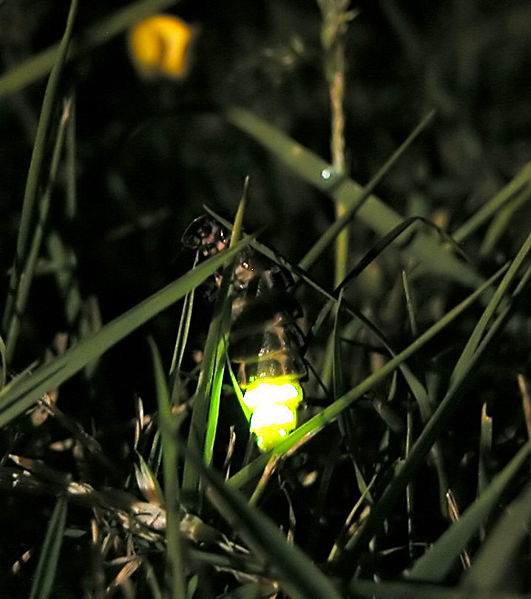
A female glow worm. (Wikimedia Commons)
DANIEL: And that’s where a handful of community partners have come in. A pensions company that’s added green space and nesting boxes for swifts on their property. A volunteer group that helps transform dodgy public parks into spaces friendly to both people and wildlife. Even the local university has worked with school children to plant a colorful wildflower meadow on one of its lawns. By raising awareness around one species at a time, that species benefits, as do all the organisms it associates with.
Emily Stallworthy and Paul Martin say it doesn’t take that much to encourage wildlife to live amongst the human residents of a city – a bit of planting here, a bit of fence trimming there. And before you know it, something really unexpected turns up.
[PEREGRINE FALCON CALL]
The clouds have parted momentarily above the nature trail. Martin looks up into the sky.
MARTIN: Peregrine falcon, that is.
DANIEL (on tape): That’s a peregrine falcon?
MARTIN: That’s our big predator, just flying over. That screaming sound if you can hear it. And that’s what our projects are about, for people to go, “Oh, I can hear a peregrine falcon,” and look up, and think, “That’s part of my city, that’s part of what I belong to.”
DANIEL: For Living on Earth, I’m Ari Daniel.
CURWOOD: Our story on Wild Exeter is part of the series, One Species at a Time, produced by Atlantic Public Media, with help from the Encyclopedia of Life.
Related link:
One Species At A Time
[MUSIC: Breakestra “How Do You Really Feel” from Hit The Floor (Ubiquity Records 2005)]
CURWOOD: Living on Earth is produced by the World Media Foundation. Naomi Arenberg, Bobby Bascomb, Emmett Fitzgerald, Andrew Keys, Helen Palmer, Kathryn Rodway, Adelaide Chen, James Curwood, Jennifer Marquis and Gabriela Romanow all help to make our show.
Jeff Turton is our technical director.Alison Lirish Dean composed our themes. You can find us anytime at LOE.org. And like us on our Facebook page - it’s PRI’s Living on Earth. And we tweet from @LivingOnEarth. I'm Steve Curwood. Thanks for listening.
ANNOUNCER 1: Funding for Living on Earth comes from the Grantham Foundation for the protection of the environment. Supporting strategic communications and collaboration in solving the world’s most pressing environmental problems. The Kendeda Fund, furthering the values that contribute to a healthy planet, and Gilman Ordway for coverage of conservation and environmental change. Living on Earth is also supported by a friend of Red Tomato, supplier of righteous fruits and vegetables from northeast family farms. www.redtomato.org. This is PRI, Public Radio International.
ANNOUNCER 2: PRI, Public Radio International.
Living on Earth wants to hear from you!
Living on Earth
62 Calef Highway, Suite 212
Lee, NH 03861
Telephone: 617-287-4121
E-mail: comments@loe.org
Newsletter [Click here]
Donate to Living on Earth!
Living on Earth is an independent media program and relies entirely on contributions from listeners and institutions supporting public service. Please donate now to preserve an independent environmental voice.
NewsletterLiving on Earth offers a weekly delivery of the show's rundown to your mailbox. Sign up for our newsletter today!
 Sailors For The Sea: Be the change you want to sea.
Sailors For The Sea: Be the change you want to sea.
 The Grantham Foundation for the Protection of the Environment: Committed to protecting and improving the health of the global environment.
The Grantham Foundation for the Protection of the Environment: Committed to protecting and improving the health of the global environment.
 Contribute to Living on Earth and receive, as our gift to you, an archival print of one of Mark Seth Lender's extraordinary wildlife photographs. Follow the link to see Mark's current collection of photographs.
Contribute to Living on Earth and receive, as our gift to you, an archival print of one of Mark Seth Lender's extraordinary wildlife photographs. Follow the link to see Mark's current collection of photographs.
 Buy a signed copy of Mark Seth Lender's book Smeagull the Seagull & support Living on Earth
Buy a signed copy of Mark Seth Lender's book Smeagull the Seagull & support Living on Earth

